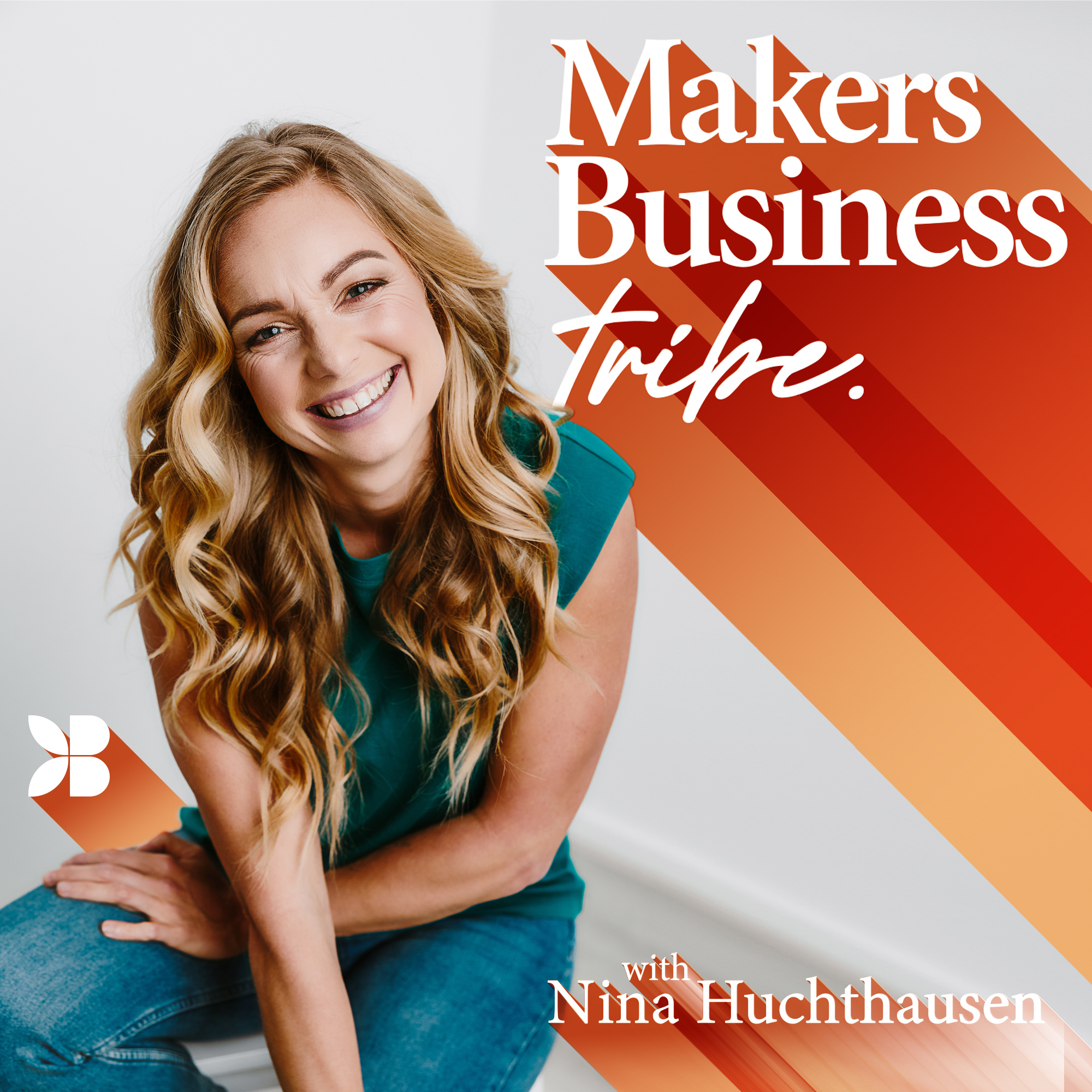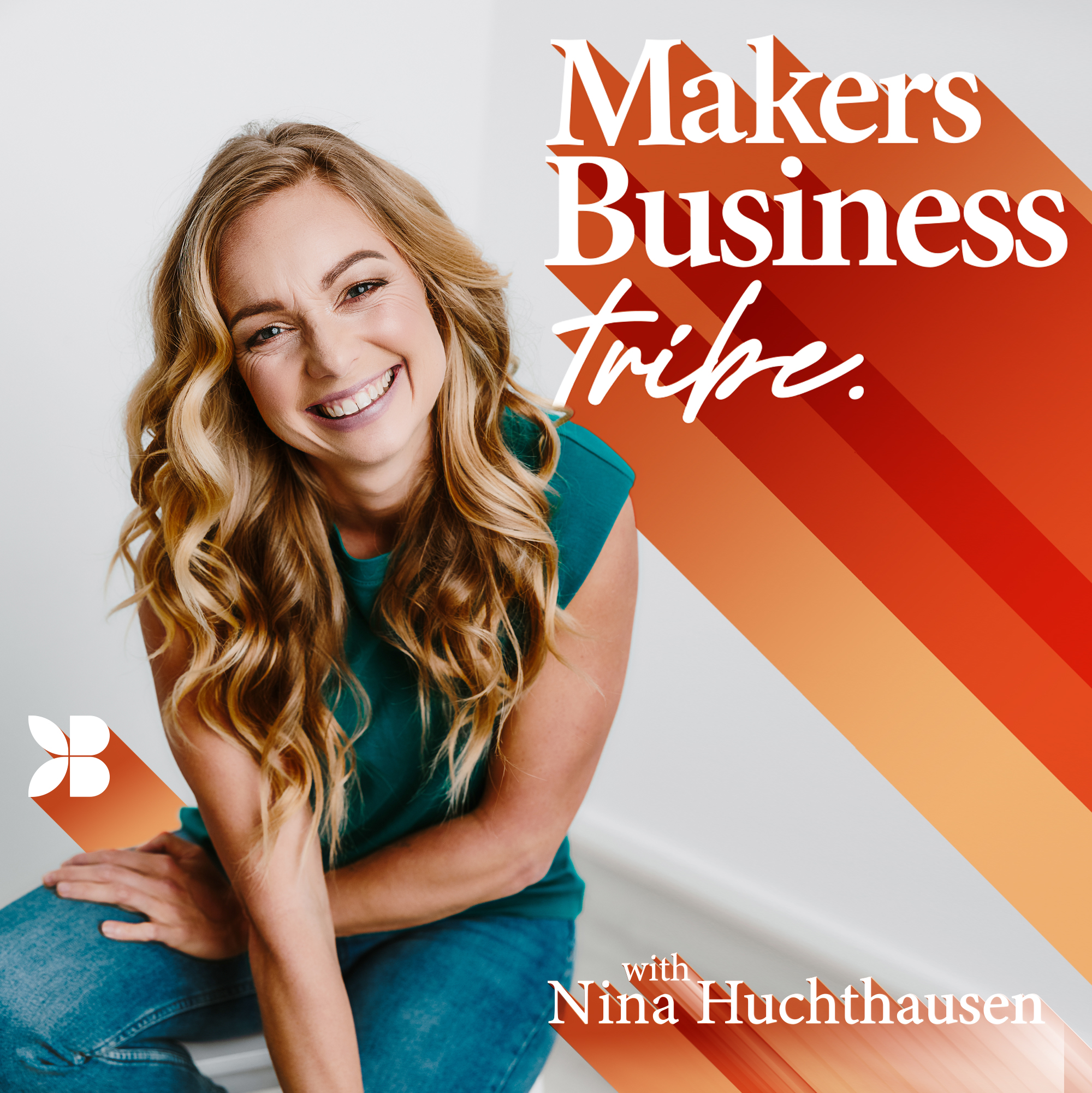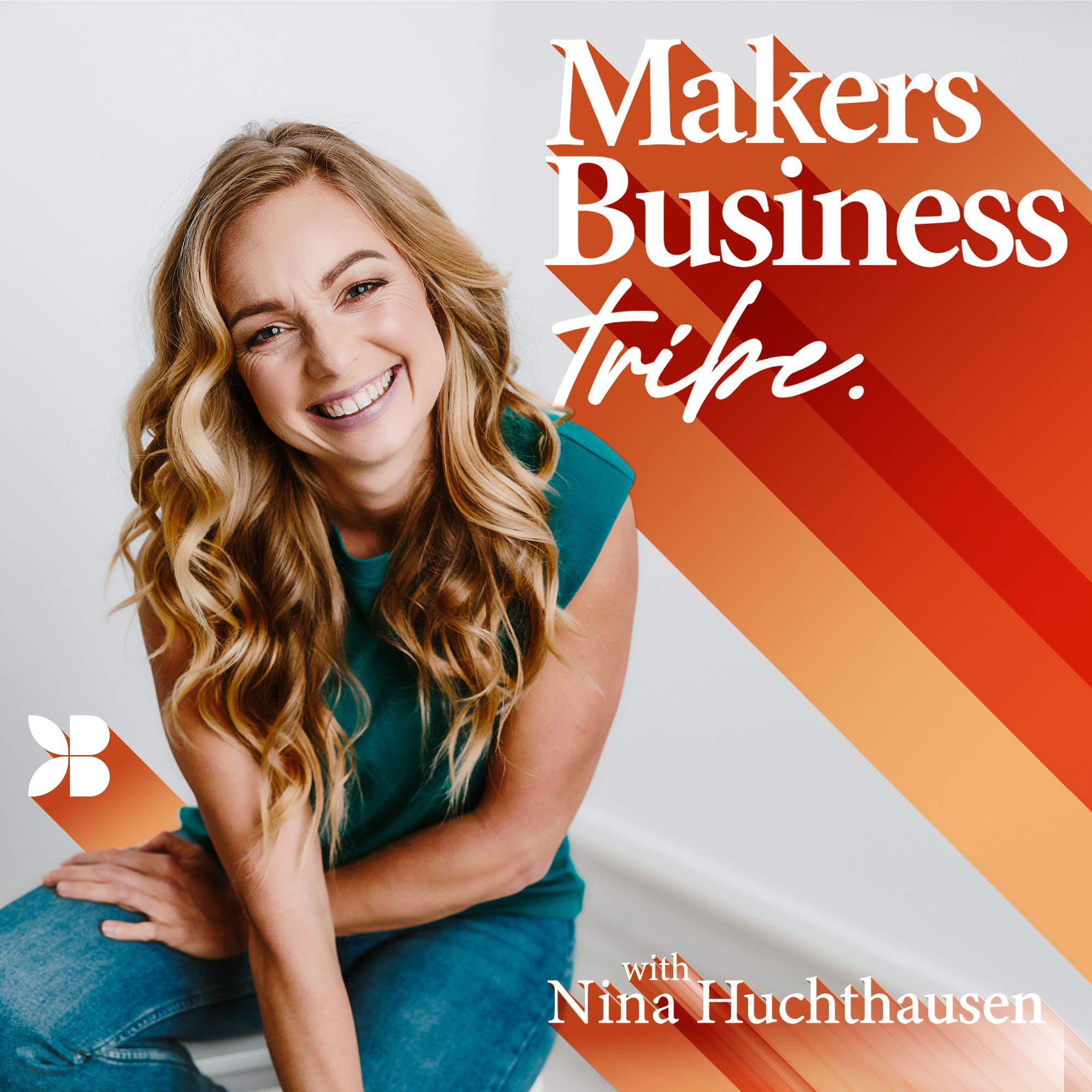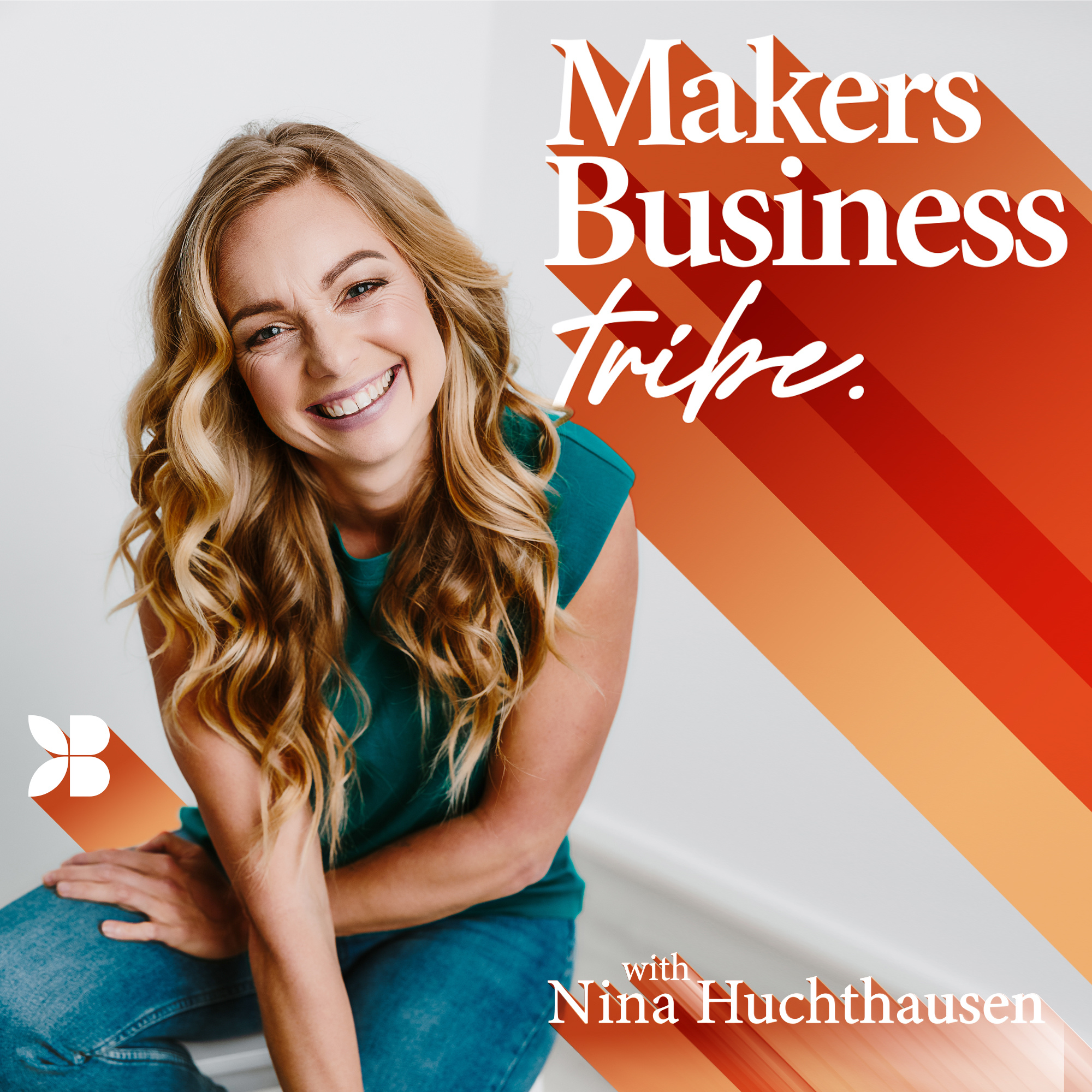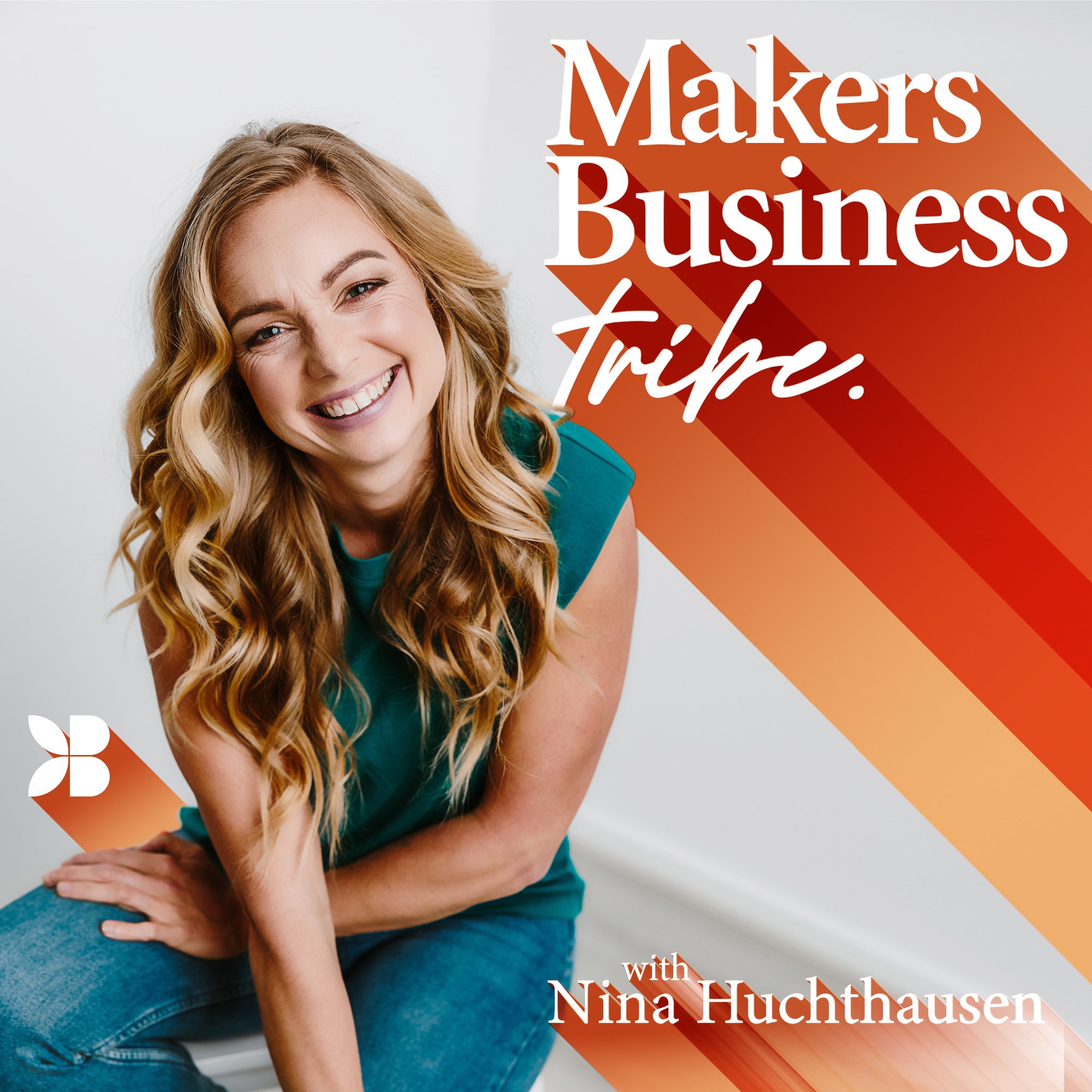Episode Transcript
Speaker 1 3:58
All right, all right, all right. Welcome everyone to the makers business tribe podcast. My name is Nina, and we at the makers business tribes. And there's Georgie, Joe and myself, we help health conscious, product based businesses not just get their products into retail, but ultimately help you maximise sales and grow, grow, grow those retail relationships till forever, because ultimately, once you get a retailer on board and they love you, they keep stocking your product, that means very little manual effort from you, and you keep recurring bulk orders Coming in, and you just service them right, which is absolutely wonderful. And the reason why I love this system so much is because we, number one, we don't need to spend money on ads. Number two, we don't need to chase, Chase, Chase, order after Order and keep reaching out to individual humans and making sure they're choosing our product over somebody else that they kind of get advertised at and get talked about. But we can foster long term human relationships, and we can get feedback on our products. We can get feedback on trends that change. We can get feedback on on pricing, on packaging. We
Unknown Speaker 5:23
and
Speaker 1 5:25
we, ultimately, we can employ this whole army of really talented sales people to help us get our products into the hands of our customers. Yeah, and that can be a very wholesome way. Because ultimately, you know, each month what sales are gonna very likely come in, yeah, and you're not like, each month fretting about, is this ad campaign gonna work? Is it gonna work? Is it not gonna work? What am I gonna do? Yeah, um, am I spending too much? Is what's what's the ROI? It's like, the more stockers you on board, the more recurring sales will just drop into your inbox, right? The beautiful thing is, oh my gosh, and then stop gigging out and why we don't we're doing but you can use shelf as free advertisement, right? Because how many times have you decided to buy a product, because you start seeing it pop up everywhere, every store you go, you're like, man, is this product again? I should really try that, right? And you as a product maker, as a manufacturer, as a designer of this beautiful thing, you are not paying for that shelf space. Retailers are paying you because they bought the product and they're giving you that shelf space. They do that for the margin, right? You give them 40% margin, 3550, whatever it is in your category, that's a reduction of the RP. But you're getting paid for me, Nina, to keep seeing this product and when then awesome staff tells me more about it, and I'm like, Shit, yeah, I'm gonna try this. You made a sale, yeah, and that's awesome. So it is such a great way to kick start your journey of scaling your business without ads and without chasing by just onboarding and bringing on more and more and more stock is and increasing your demand that way, and then you can absolutely use that money and reinvest into a marketing team, into ecom experts, maybe invest and add more fuel to the Fire and get influencers to talk about your product so many different opportunities. Once you have consistent cash flow, right and you're not chasing you don't have to put into it. You can also invest into manufacturing, outsource manufacturing, three PL whatever it is to make your life easier, and that's why I think it's a really, really great way to add to that. To add to if you are already selling ecom, get another distribution channel that doesn't rely on the internet. And if you're just starting off and you don't have huge amount of cash flow, it is a very cheap way to enter the market, to test it, get it back and grow from there. So now, if you're still here with me, because, like, why the heck is she talking about? Is because today's topic, oh my gosh, I've been talking so much, today's topic, I'd like to dissect with you. Why I posted today on the grammes, and been talking about this so much recently that getting stocked shouldn't really be your goal when you enter retail, staying stocked is where it's at. Okay? What does that mean? Nina, staying stocked. Look, of course, in order to stay stocked, you need to get your foot into the door. But if you are investing, let's do the numbers. Yeah, three hours on a stockist, and they place an initial order of $400 cool, that's nice, but there is a lot of a lot of hours spent, and you can probably, just like, if you're lucky, get two of those orders in a day. That is not enough money for you to sustain yourself, right? And then you're in the cycle of chasing. But if your goal is okay, I'm not just going to get that $400 order, but ultimately, what I'm creating here is a long term Win Win relationship with this stockist. And my aim is not the one order, but my aim is to get consistent reorders every four weeks, six weeks, or even every eight weeks, doesn't matter, but consistently,
Unknown Speaker 10:04
then you could be turning the $400
Speaker 1 10:07
into $4,000 each year, if they're ordering 10 times within the year, if you can, if the $400 is maybe just this very small intro offer, and then your aim is to increase the volume of the same products or expand on the range. Yeah, you are turning the four hours of conversation into four to maybe 10 grand of orders. And to me, that should be the aim and the reason why I'm bringing this topic to the table today for you to think about is because most people do not have a plan in place to achieve that. Most humans that I talk to that are making product and working so hard, they have spurts of reaching out and talking to stockist and then place that order, and then that's cookies, then that's it. And then they wait and hope the retailer will just order again once the product is once the shelf is empty, that rarely ever happens, okay? And rarely ever happens, because unless your product already has a huge amount of demand, there needs to be more from your side for the retailer to actually sell the product. And there also needs to be more from your side to stay top of mind for the retailer, there needs to be input from your side. If product is not selling, we need to troubleshoot. You need to come forward to ideate and offer them seasonal product drops, yeah, for Christmas. That might be very different than if it comes to Australian winter, and you need to come to to the table when it's time to sell, when it's time to do a discount, when it's time to do bundles, yeah, because a retailer, they might have 1000 2000 SKUs in their shelves. More, less depends on the size. A retailer cannot think about all of these things by themselves, and then keep picking up the phone and talk to the founder of the brands, or whoever is in your in your team for retail to support a retailer, yeah. So it needs to come from you. Big brands know this or not. Maybe they don't even have to do it because they're so big, but most small brands don't know this, or don't carve out the time to set up a really good system. And then you get in, and then you get out, you get in, and you get out, and then you're not going anywhere. And then I hear things like, I tried retail, it's too hard. No, it's not too hard. You just don't have a system in place to capitalise on this incredible opportunity, because if you use retail as a great baseline, then you can use the capital to feed your ecom growth, and also, most of the time, people, once they've bought it once or twice in retail, they might jump online and see, can I get a better deal? If not, then I will go to reach back to retail. But sometimes you do, yeah, so you can convert a whole lot of your retail customers to purchase, both online and offline. Yeah, but you need to know how, and you need to have a strategy in place, because otherwise you did. It's crash and burn. Okay? Because you get exhausted, you get tired, and some point you don't want to do it anymore. Now, if you want to know how to capitalise and maximise and increase the return investment for every single retail conversation you have and get not just into retail, but stay in retail, then keep on listening. All right, let's go for it. So number one, what's the first thing you have to do, as soon as a retailer says yes, you need to have an onboarding flow in place. You need to have a really clear way that you just replicate, replicate, replicate, to make sure stock is set up for success to start selling your product. So first thing you need to realise is that they have no idea about your product. Okay, maybe they have read about it or a little bit, little bit of information, but they don't know the ins and outs. So if you just put product into shelves, and they don't know how to sell the product, well, likely customer conversations go like this, excuse me, can you just tell me a little bit about that product? Oh, yeah, that's a new product we just recently stocked that. Yeah, cool. So what's what's good about this? Let me read. Let me read on the back, yes, so it has this and this and this ingredient. Oh, this one. Yeah, I noticed that's quite good. Okay, well, look, I'm I'm here to get another collagen. It's called collagen. How is that different or better to this one that I'm already buying. Oh, look, I don't know. I mean that. Let's compare labels. Can you see that that that is not great sales? Yeah, and probably I will end up meaning as a consumer, buying the collagen that I'm always here to buy, because that was not at all helpful, and it also doesn't empower your staff member to ever recommend this new product, because they actually know, don't know anything about it. The first thing you need to do, you need to create a very simple staff training toolkit, a simple one pager that explains to me when to recommend the product, what are the unique selling points about it, how it works and how To take it, yeah, and if me as a store, I already have, like, 345, collagen here. Maybe you can also do a quick comparison to show what are your hero ingredients that has he plenty more and when that's relevant, yeah, number one thing, because staff of any retailer is an extension. To use an extension to your sales team if you don't equip them with that power of knowledge. Very, very hard for that retailer to become successful unless they're going beyond and above and finding all of this out themselves, which they don't have the time for. And also you want to make sure that the staff has tried the product. Give them some samples. The more the stuff can sound like, Oh my gosh. I tried it. I love it. That, in itself, would probably help me to buy that new collagen. They say. I love this product, man, I tried it. Nina, it's amazing. Tastes amazing. Oh my gosh, yeah. And if you look at the ingredients, great, ah, so yeah. So number one thing, if you don't do anything else when you drop off product, is train the staff. Have a verbal conversation, give them those cheat sheets. Don't anything convoluted. Don't just give them customer flyers. Have a very different intention. Yeah, you need to write for the staff as if you were writing it like short, sharp, bulleted script for anybody else in your team to sell the product. Yeah, so get that right, and there are multiple different ways to get to a staff member could also be very short videos and other elements. Ask them what's needed. But whatever you do, you want to be confident, the staff loves the product, champions it. And when I walk into the store and say, Hey, I got joint problems, that they pull out the collagen. Here's the solution for your problem. Okay. Second thing onboarding, shelf display. We need to put the product somewhere where the customer can see it, where it pops out of the shelves, and I can actually interact with the product. So Don't, don't allow the retailer to put it somewhere where I can't see it, or where I can't stop and actually browse, because there's some corners in stores where it's very hard to stop. Not good, okay, make it easy for me to spot it and to interact with it. That's a whole point of really good shelf display. Then maybe you can create a magnet, such as a wobbler or something for my eye to to see, like even more or even a shelving display unit, make it look hot, yeah, because I keep browsing and interacting with the product, if the first thing I see makes me hungry in apostrophes, okay, but makes me excited, makes me want to buy the product, just from the looks of it, and I don't even know what's in it, okay,
Speaker 1 19:31
make sure there's something for the customer to read about if your product needs education, because staff is not always there. So what can you do to educate the staff about your product so they understand why I need it in my life, what it is and how it works and what results can I expect. Tell me about the results. Tell me what other customers are saying, how much it has changed their eczema to supple, rich, looking, beautiful skin. Tell me about that. Give me confidence that this product can help me and how it can help me. Yeah, very important, because most of the time staff is busy, and oftentimes customers don't want to interact with the staff, because they might be like, I don't know if they can really help me. Yeah, help the customer out. Last thing is onboarding. And not many stockers do this at all, but I would always ask, Hey, how much do we need to sell from of this product in the next 30 days for you to place a reorder? Ask them. Get super clear, crystal. Super clear clarity. Because if the retail tells you, okay, cool. Well, if we can sell 1010, units in next 30 days, I'm gonna place another order. Awesome. Well, then everything that I've just spoken about now makes sense, right? Because we don't know to drive sales, staff, education, to drive sales. Best shelf display ever to drive customer education to drive sales. Yeah, sampling, I've forgotten, customer samples. We need to get the product into customer's mouth, either through a live demo from you. We're paying that, or the staff's gonna do it. Yeah, we need to get everybody starting to rave and love the product. Why? Because we want to make sales why we want to empty the shelf. If you set a sales goal, you know what we're aiming for, because then it's not like you're making a suggestion. Hey, could I train yourself like cool? Okay, we have this goal. So let's get your staff trained. Let's get the shelf display in order. Let's get customer education material there. Let's get a demo sorted, so that customers can try, so that we can reach that sales goal, so that we can win together, because if you sell out, you make more money, retailer, and of course, I can restock it for you. Yeah, onboarding. I'm saying it this crystal clear, if you do not have an onboarding sequence in place, you are in trouble. My friends, yes. So get that sorted or reach out to me. We can work together on this second thing. You've placed that order, you've ordered. You gotta stay top of mind. You need to keep checking in with these guys. You need to see how sales going. How can I support you? What are customers saying? What do you need? How can I help you drive more sales? Keep fine tuning the approach. Maybe the way you've positioned the product might not be the best way. Maybe you've all been talking about this product is great for weight loss, but maybe people right now don't want to lose weight Well, shit. Products not selling. If you ask them, if you check in, have a quick phone conversation, how can I help you? And they're like, look, product is not selling. You can troubleshoot and say, Hey, another key benefit of this product is focus. Let's change, let's change how we're pitching the product to you have trouble focusing in the morning. Take this product because it does it too. You only know that through conversation. Yeah. Now don't just call and say, Hey, you want to place another reorder. Call Mary up and say, Hey, Mary,
Unknown Speaker 23:28
we have this sales goal. How sales going?
Speaker 1 23:32
What's happening? What do you need from me? I am, I'm, I'm behind you. I'm cheering for you. I give you whatever you need. Number one, she will love that, because you're actually caring. Number two, you can help us through whatever is happening. So troubleshooting, so top of mind everything. Now, how else can you stay top of mind? Because you might not want to call everyone all the time. Social, great way social media. Do a monthly Quick shout out, yeah, you could just do a quick carousel with all of your all of the sockets that you want to highlight and say, Hey, we're sticking here, here, here, and you tag them all, and that way the stock is will get a notification the inbox. Like, oh, Nina, thought about me. That's nice. Like, like, like, Yeah, and you are driving your customers into their store and they remember you. That's a really nice non interaction. Interaction, very simple to
Unknown Speaker 24:30
do, yeah, third one,
Speaker 1 24:37
troubleshooting. How can you troubleshoot? Troubleshoot is kind of part of staying top of mind. Troubleshooting means giving them a call or by email. You could just ask them, Hey, I noticed you haven't ordered in a while. How can I help you? Where are we stuck? Yeah, because we're not sticking our head in the sand ever. We know. All right, cool. I have a troubleshooting guide in place as a makeup because maybe the positioning is off, maybe the pricing it off, maybe shelf displays off, maybe new staffs come in and hasn't been
Unknown Speaker 25:14
trained yet,
Speaker 1 25:16
or maybe a very similar look and product has entered their shelves, and consumers start getting confused. We don't know. So when you notice sales are dropping, pick up the phone and check in and see, hey, what's happening. How can I help you get rid of this stock? Because if it, if any stock collects dust, their money is trapped in there. Remember that? That is the mindset that I want you to have if me, as a retailer bought stock in terms of for 500 that's not moving they have $500 are just like turning to dust. We cannot let that happen if you want for them to succeed, and that should be your main goal. That's why you're employing them helping you. So pick up the phones like, hey, let's work through this. Ultimately, you want to turn that $500 into $1,000 right? So here's my troubleshooting guide. Go through staff training, shelf display, customer education, sampling. The main things. Has that been happening for a while? What do we need to do here? You can also check pricing, yeah, because maybe your product is priced too high, or priced way too low, or has the demographic changed? And for some reason, this demographic is looking for something different. Can we reposition the product? Or maybe, do we just have to, like, discount it to get it off the shelves? Because
Unknown Speaker 26:52
nobody needs
Speaker 1 26:55
your cacti elixir in a male barber shop? I don't know. I'm making this up. Maybe it has changed from female to male Baba. Female hair salon to male Baba. And you have a female hair product, it's probably not gonna sell. That is extreme, but it can happen. So troubleshoot, troubleshoot, and the trigger should be, sales are dropping. Point number four to maximise sales seasonal office, you want to be 100% familiar with what this look like from a consumer perspective when it comes to sales, and what that means for retail and when they are thinking about it. So for example, what do I mean by that? We know there is a spike in sales for dads close to Father's Day, right? So consumers are on the hunt for dad's gifts. When do retailers get ready for that? Probably about six weeks to eight weeks prior, because they need to place orders to get ready for that sale now, that's a short sales window. Yeah? Now who's buying for Father's Day? The moms, the kids. So it kind of needs to be attractive for those moms and kids, but it's definitely for the Father. Yeah, there's a certain price point that kids and moms spend for Dad, so don't go overboard with that. But if your product is a great dad's gift, yeah, because maybe you're selling beard oil, yeah, and maybe something else to make that look amazing. Put them together. Have a conversation with your retailer early and say, Hey, what are you doing for Father's Day? I'm thinking this great bundle sits at 2599 RP, that might be great gift for kids and moms to get. To put something together, put in your shelves. Yeah, do a deal, because it's a great reason for you to maybe introduce a new product as part of that bundle, or put in the bundle or best seller, as well as something that isn't selling so well. Reach out to them early. Do this campaign together. You can promote on your socials, on your email, on your website, drive people in store, and people can buy the end. You know, since moms or kids are buying it for dad, and Dad hasn't used this before, dad might not have bought this before, but now he hasn't. He was like, Oh my gosh, I love it, son. Thank you so much for giving it to me. So it's a great opportunity to reach new customers, but you need to know number one, when are those sales events? And when do you need to get your ducks in a row to talk to a retailer early enough to capitalise on it? Yeah, so there's a working backwards exercise involved. That's why we are always very big on having a seasonal sales calendar in place for all of our customers, all of our the people that we work with, so nobody is surprised or forgets to ride that wave and
Unknown Speaker 29:54
number five
Unknown Speaker 29:55
joint sales,
Unknown Speaker 29:57
yeah, because sometimes It's great
Speaker 1 30:00
way for you to get rid of stock, for them to get rid of stock, for them to place another order. End of financial year is normally sales season. We know Boxing Day sales. We don't want to do it too often, because if customers are always just waiting for next sale, might be trouble, but maybe you want to do it twice a year. And it could be that you again, reach out early and come like, hey, how? Like, we have a bunch of stock. You have stock. See how we can sell that off. Maybe I can give you even more product. And we do. I carry 50% of the total discount. You carry the other 50% let's say no. We might do a buy three, pay for two deal, and you carry some of that reduced margin, and they do the same.
Unknown Speaker 30:50
But you need to plan that,
Speaker 1 30:54
and you need to reach out early. Now, do you need to have it all different for every single retailer? Absolutely not. Yeah, maybe you have a couple different categories that you work differently. But ultimately, if you know it's Father's Day, you got a product to put one or two different office together, then reach out to your stock is early enough and see, do they want that? Yeah, and that for certain, creates more order of volume for you, you stay top of mind, yeah, and you're also you could continuously learning, working and not working in the market, so you can keep your finger on the pulse. And that learning you can use in your online space, in your online marketing. It's absolutely brilliant. So if you have a whole bunch of stockists and you're like, Yeah, I'm already in retail, but not 80% of those are actively ordering every month. Look at the five points that I just mentioned.
Unknown Speaker 31:53
Are they onboarded?
Speaker 1 31:56
And is it time to run another onboarding check? Because you don't just do that once you want to keep checking in staff, shelf, customer, sales, goal sampling, that that keeps happening. Yeah. Are you top of mind, or have they not heard from you in six months? Are you picking up the phone to troubleshoot if sales are going down? What seasonal office do you want to plan out and do you want to do some joint sales? Yeah, so those are our top five. We do a whole bunch more of our trip lines. But honestly, seriously, 80% if you really, if you're rigorous and implement, implement and refine that, oh my gosh, you can turn a $400 order into a 4000 to $10,000 order. Do that times 20 stock is you don't need 1000 stockists, but you need every stockist to keep ordering from you. Yeah. Now, do you have to be on the road for that all the time? No, this is actually something that you can work on at your computer at home, and then to keep having the conversations. But what you need is a great system, systems processes, reminders for it, yeah, really important to have in place. So if you're serious about retail and you really want to milk the cow, implement this, my friends, I'm going to put a summary of these key steps into the show notes as well, so you can tick that off. And if you need help with this food chat, I hope you enjoyed this episode. I love you and leave this and I see you next week.


